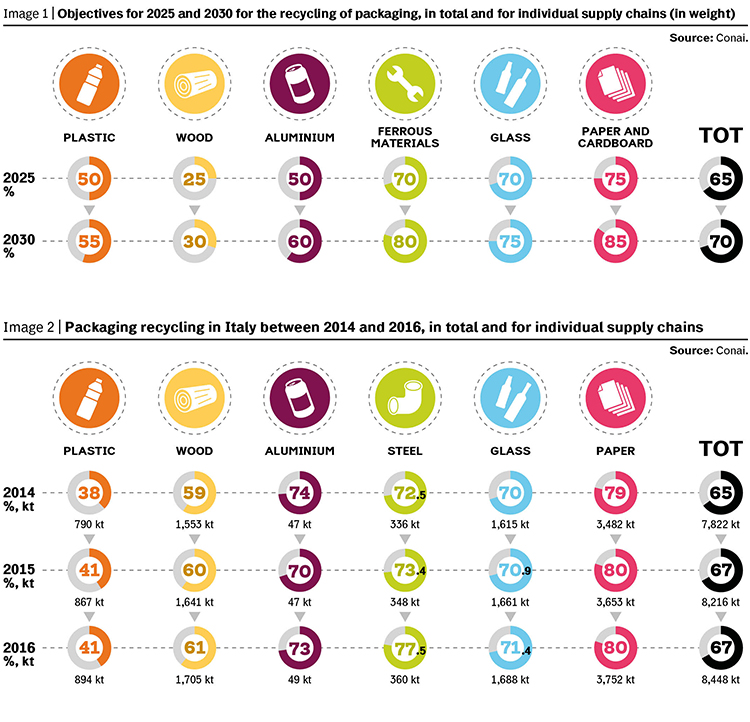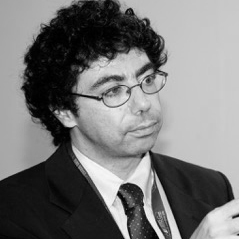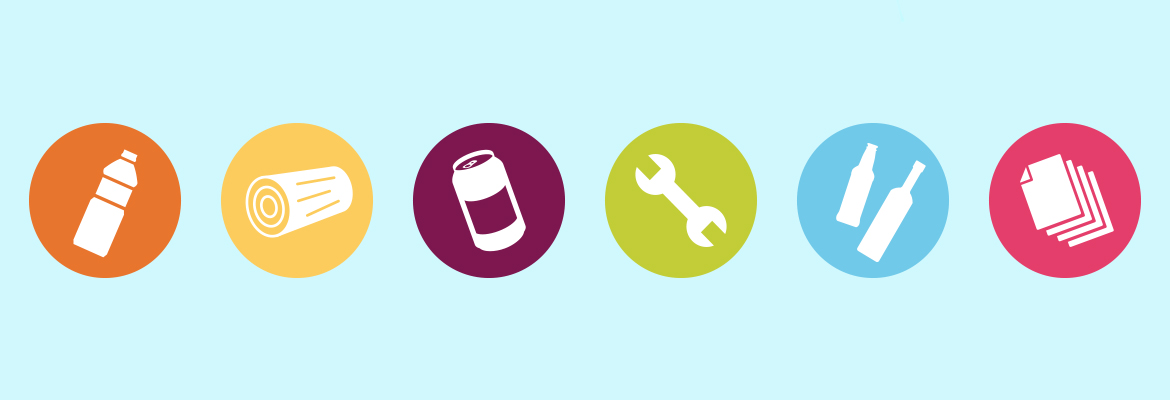Packaging has found its place in the European Circular Economy Package, approved last April by the European Parliament. It involves a revision a revision of Special Directive 1994/62/CE on packaging waste (member States will have two years’ time to implement the new standards). Some of the main news is that, starting from 2025, each country will have to implement Extended Producer Responsibility (EPR) schemes for packaging recycling systems. The Circular Economy Package contains new objectives for recycling, and the issue of reusable packaging has become a focus: the directive offers indications on the measures that member States could implement to stimulate their position on the market. “Overall, Conai’s judgement on this revision is a positive one: this European directive puts down on paper more than 20 years of work and experience, trying to give greater uniformity to the different European systems that have evolved over time and in different ways” says head of Conai (the Italian consortium for packaging waste management) Giorgio Quagliuolo. “The new directive recognises the Systems for recycling and recovery of packaging like Conai, that were set up in accordance with article 7 of the same directive, and have acted as pioneers in the field of EPR schemes. However, the implementation process of the new provisions contained in the ‘Testo Unico in materia ambientale’ will be a delicate matter.”
The new objectives
The new objectives for packaging recycling are for 65% by 2025 and 70% by 2030, out of the total weight released for consumption, with relevant sub-objectives for different supply chains (image 1).
Italy should be able to reach these results easily, considering 2016 results (image 2): 8.4 million tonnes of waste have been recycled, which corresponds to 67% of the total weight released for consumption. This means that the 2025 objectives have already been achieved for the glass, paper, steel, aluminium and wood supply chains.
The 2030 deadline has already been met by the aluminium and wood supply chains. All of which using current methodologies for calculation, which could be modified in the future. In fact, the revision of the directive will define common rules for all member States. In particular it will address the topics of measurement criteria and transparency in reporting, in order to allow a more uniform comparison of each nations performances. “It will be fundamental to clarify the exact measurement criteria for the flows of recycled material, that in our view should either take into account the inflow to recycling plants, or the outflow from waste handling plants, with criteria that can codify the quality of materials,” says Quagliuolo.

The challenge of plastic
The plastic supply chain is the furthest away from the 2025 objectives, and therefore it will be crucial to identify tools and structural measures that could generate progress. In this regard, last January the diversified contribution on plastic packaging came into force. Its objective is to: clarify which kinds of packaging are currently being sorted and recycled, facilitating their valorisation by businesses through recycling or recovery; and which kinds of packaging instead raise more recycling issues, in order to adopt specific R&S promotion initiatives like ecodesign and design for recycling.
“In order to to close the loop – says Quagliuolo – it’s essential that the valorisation industry gets incoming materials of an increasingly high quality, and that’s the reason why we promote the increase in separated waste collection, accompanied by rigorous standards in the systems of collection, that can guarantee proper quality standards for recycling. In this regard the recent publication of the technical rule UNI 11686 Waste visual elements has the objective of promoting and harmonising separate collection, in Italy and beyond.”
Italian recycling of packaging: a European example of excellence
“As a consortium that has worked by enacting shared responsibility between the different actors in the supply chain, involving first of all packaging producers and users, we believe we can still make an important contribution” continues Giorgio Quagliuolo. “Even more so, if we consider that the new directive makes the creation of packaging waste management systems similar to ours (EPR) mandatory, on the basis of the positive results we have achieved. In the past 20 years, even thanks to Conai’s contribution, Italy has made notable progress, and become one of the European examples of excellence in recycling, especially for the recycling of waste packaging. Some of the main factors that have allowed for this success are: a clear regulatory environment, with equal rules for all players; the fact that Conai is a private and entrepreneurial body, and is therefore able to pursue its recycling and recovery objectives independently; and its non profit nature, that allows Conai to affect the whole supply chain with prevention measures.”
However, Italy will have to continue investing to increase the qualitative and quantitative aspects of the areas that are still far from reaching the legally binding objectives, especially in Central and Southern Italy, where the percentages of recycling are even lower than the European average, in spite of the fact that even in these areas of the Country, good practices are continuing to increase. Bari, Catanzaro and Potenza are just some of the municipalities Conai has been cooperating with for some years, and positive results have already been reached, especially in the short-medium term.
Conai, www.conai.org



